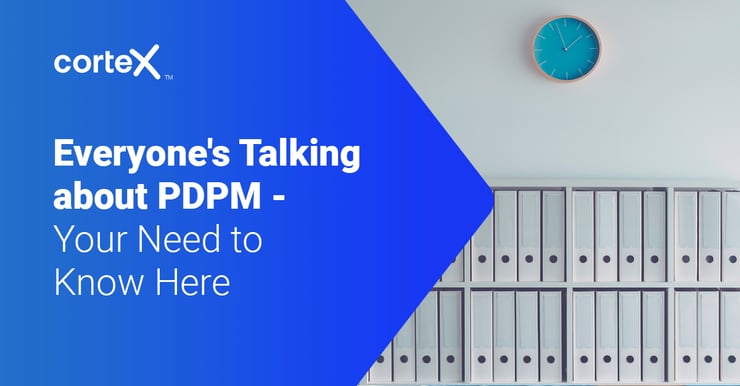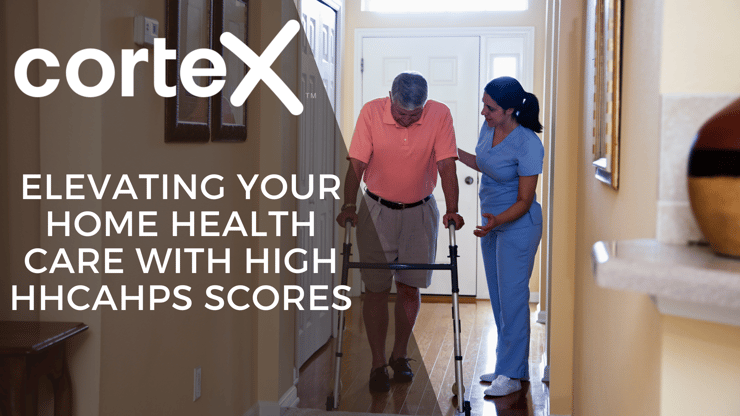
Why Are They Changing How Skilled Nursing Facilities (SNF’s) Are Being Reimbursed?
The Centers for Medicare and Medicaid Services (CMS) have had concerns for many years about the RUG payment model used by SNF’s. A system driven by therapy minutes could easily incentivize providers to prescribe therapy beyond patient need. The new PDPM system removes this incentivization and also uses a payment system that is driven by cross-setting measures, a requirement of the IMPACT Act of 2014.
The new PDPM system bases payments on patients’ clinical characteristics rather the number of therapy or patient services delivered. This ideally leads to more accurate payments and incentivization to provide more appropriate care.
What is PDPM?
The Patient-Driven Payment Model (PDPM) is the proposed new Medicare payment rule for skilled nursing facilities. It is intended to replace the current RUG-IV system with a new way of calculating reimbursement. Under PDPM, therapy minutes are removed as the basis for payment in favor of resident classifications and anticipated resource needs during the course of a patient’s stay. PDPM assigns every resident a case-mix classification that drives the daily reimbursement rate for that individual.
How Is PDPM different from RUG-IV?
RUG-IV is the former patient classification system that went out of practice as soon as PDPM came in. PDPM differs from RUG by the way patients are classified. Under RUG, patients are classified into therapy groups by the volume of therapy services they receive. The more the services, the higher the payment classification.
This model caused providers to issue more therapy hours regardless of a patient’s unique needs, goals, or characteristics. PDPM is a case-mix group (CMG) reimbursement method that groups patients together by clinical similarities rather than volume of services. PDPM classifications are organized by specific, data-driven patient characteristics. The result: PDPM helps providers better manage patient services with a billing model that matches a patient-first care model.
PDPM and Therapy Staffing
When PDPM was first introduced, facilities assumed there would be a decrease in therapy minutes provided to patients. However, therapists believe they will be providing just as much therapy as before, but it may shift in its type. For example, they may be providing more concurrent or group therapies rather than individual minutes.
It is possible that as PDPM creates these more efficient care models, there won’t be a need for as many staff therapists at SNF’s. In this way, PDPM may reduce some of the administrative burden spent on recruiting.
Financial Benefits of PDPM
Providers may be worried about negative profit margins with PDPM’s reduction to billable therapy minutes. However, PDPM is designed to be budget neutral. SNF’s will receive higher reimbursement for existing nursing care to offset lost therapy minutes, making it possible to achieve neutral or even positive profit margins.
PDPM Components for Different Therapy Types
PDPM payments are separated into five components and then totaled, unlike RUG-IV which calculated a single score for all services. The five components are:
- Nursing (for all Nursing and Social services)
- Occupational Therapy
- Physical Therapy
- Speech-Language Pathology
- Non-Therapy Ancillaries
Each resident will have five total classifications, one for every component or “case-mix group” (CMG): PT, OT, SLP, NTA, and nursing. The group the resident is assigned will be determined based on their relevant MDS 3.0 data for that component.
In the RUG-IV model, residents’ classifications into a single group determine the case-mix indexes and per diem rates for all case-mix adjusted components. PDPM, however, classifies residents into separate groups for each of the case-mix adjusted components. These then have their own associated case-mix indexes and per diem rates.
Also unlike RUG, the per diem payment adjusts based on PT, OT, and NTA components in order to account for changes in resources used throughout the resident’s stay. These are then summed with the unadjusted SLP, nursing, and the non-case-mix component to determine the per diem rate.
PDPM Nursing Classification
The case-mix groups (CMG’s) for the nursing classification have been consolidated from 43 RUG’s to 25 CMG’s. Nursing functions which require the same resource utilization costs are grouped together.
PDPM Occupational Therapy (OT) and Physical Therapy (PT)
There are 16 CMG’s for occupational therapy components and 16 CMG’s for the physical therapy component. These are divided into “clinical categories” and “functional scoring.”
To learn more how Cortex can help you manage your patients recovery at home with our healthcare software, click here.




